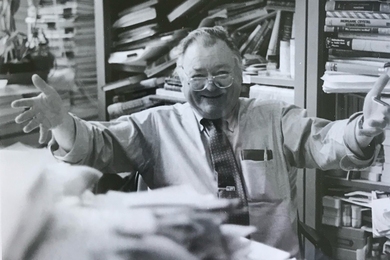Throughout her career, Ann Whiston Spirn has sought not only to explore natural beauty, but also to plumb the invisible forces that create landscape.
"A lot of my work is about process. All landscapes are shaped by a combination of natural processes (water flow and air movement, the growth of plants and movement of animals) and cultural processes--the processes of living, changing, learning--that people do. I'm always looking for that confluence," said Spirn, who holds a joint appointment at MIT in the departments of Architecture and Urban Studies and Planning.
"Knowing Where to Stand," which will run at the Compton Gallery through Jan. 30, offers a glimpse of Spirn's approach to seeing the world. The photographs will also appear in her forthcoming book, "The Eye is a Door."
Spirn designed the show as a "teaching exhibit," grouping the images in ways that invite viewers to seek their hidden connections. In the group called "Flow," the three landscapes depicted at first seem very different. A road curves around a stone in Northern Ireland; water breaks gently on a Nahant beach; under brilliant clouds in Avebury, England, a muddy path winds through checkered pastureland into the deep distance. But studying the three together yields a sudden jolt of revelation: all three echo the same curved form--an arc of road, path or shore that moves from bottom edge to upper corner. From disparate landscapes, a pattern emerges.
When designing the show, Spirn kept her MIT audience firmly in mind. Of the "Flow" images, she said, "I think every student here at MIT has some experience with fluid dynamics. And I hope they'll take that when they look at those photographs and think about the way flow shapes landscapes--whether it's the flow of water, or the flow of people and materials."
Spirn brings the same focus into the courses she teaches at MIT. "Sites in Sight: Photography as Inquiry" focuses on the camera; "The City," taught in the spring, explores the forces that shape urban landscapes.
"I love teaching engineering students, because they often don't think of the power they'll have in the future to shape the environment that we'll all be living in," she said. "In my classes, I talk a lot about urban infrastructure--sewers and water, roads and highways."
Spirn has given plenty of thought to the processes of her art. "[Nobel laureate and poet] Seamus Heaney wrote that the role of the poet in society is something like that of a diviner, who finds water underground, where it's invisible," she said. "I hope my work will lead people to see things differently."
A version of this article appeared in MIT Tech Talk on January 14, 2004.






